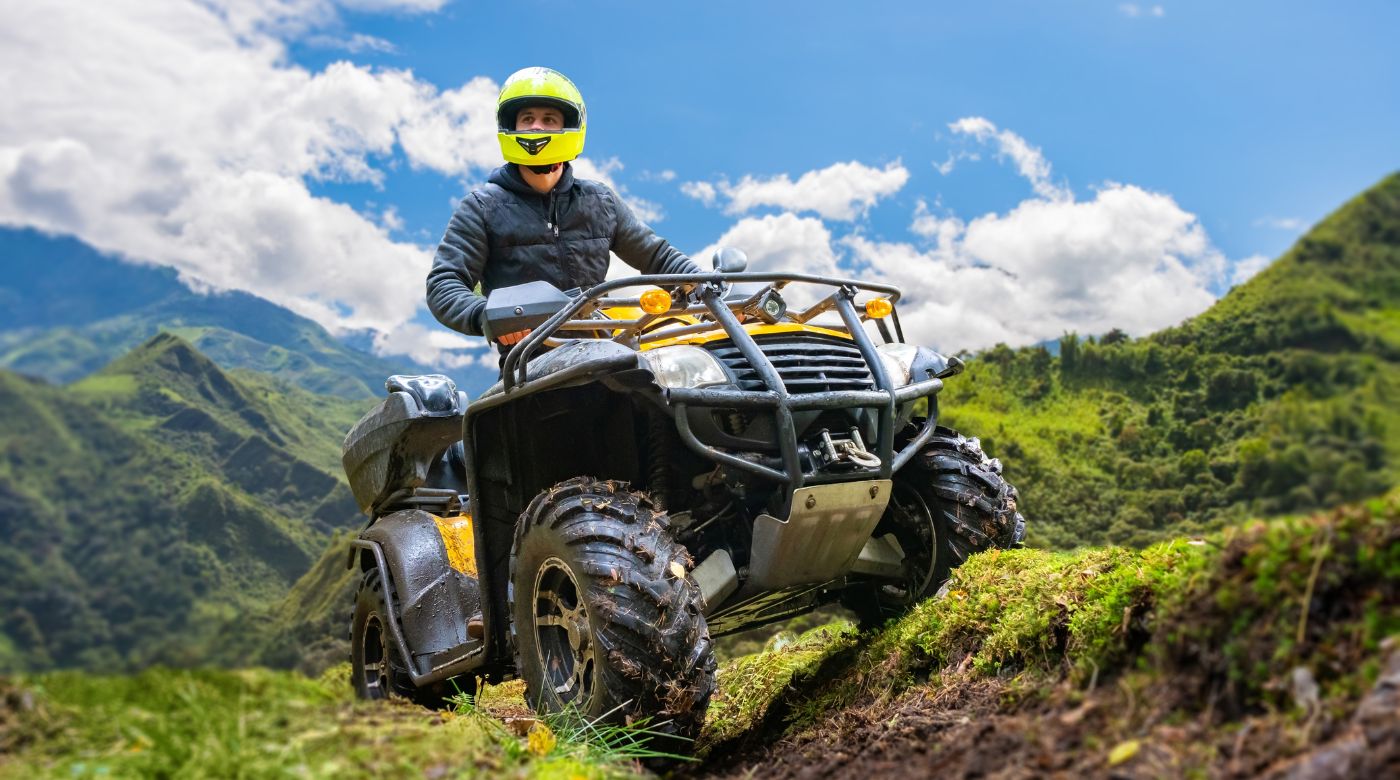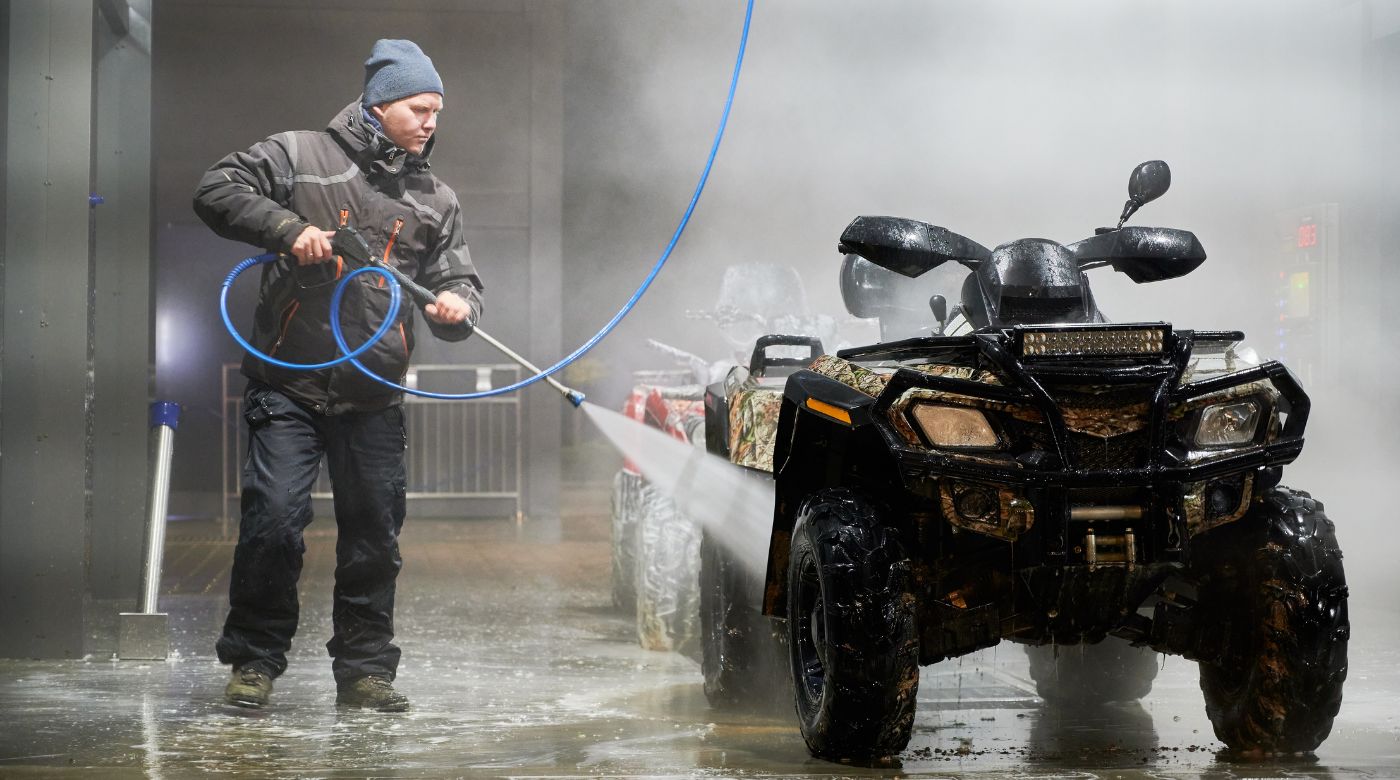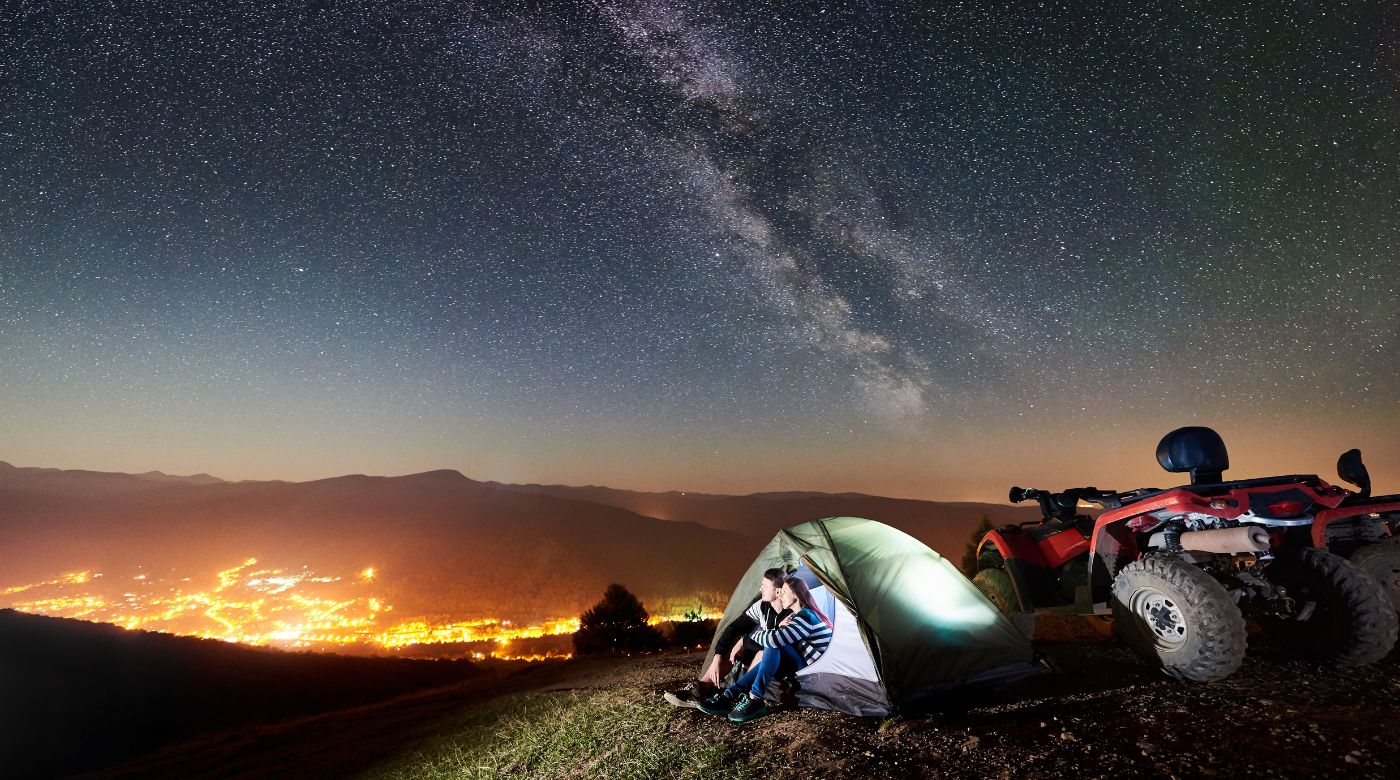Going off-road means taking on rugged, wet terrain and preparing for the unexpected. Nature can throw twists and turns your way, and learning to ride is about staying safe and knowing how to handle tricky situations. According to a report from the Consumer Product Safety Commission, ATVing resulted in 81,800 trips to the emergency room in 2018. You can significantly reduce your risk by following the rules.
Use these ATV safety tips to enjoy the trail responsibly:
1. Wear the Proper Safety Gear
Regardless of your experience level or the length of your trip, it's crucial to always put on the necessary ATV riding gear. This includes a DOT-approved helmet, goggles (unless you're wearing a full-face helmet), gloves, boots, thick pants, long sleeves and knee, shoulder and elbow pads. Bring along rainproof outer layers to shield yourself from the elements.
2. Learn from the Experts
Take an ATV starter course at a park or off-roading school near you. The instructor will show you how to operate the vehicle and navigate the trail. Bring a pal, ideally someone with more experience, during your first outing in case you get stuck or encounter technical issues.
3. Communicate Wirelessly
Riding in a group will only bring peace of mind if you can talk to each other in real time. Many trails only have enough room for one rider at a time, so you’ll need to ride in front of your friend or instructor. Hand signals limit your ability to control the vehicle.
Use wireless off-road communication to keep your hands on the handlebars and your eyes on the path. You shouldn’t have to take your eyes off the prize to coordinate. Your pal or instructor can talk you through it without distracting you from what’s ahead.
Use the Packtalk Edge ORV to connect to your companion automatically when in range. The device mounts seamlessly with your helmet to keep the conversation going. It’s also waterproof and durable to withstand anything that comes your way.

Source: Nomad_Soul/Shutterstock.com
4. Stick to the Trail
You can’t drive your ATV on the street without making modifications to navigate traffic. Stick to sanctioned ATV trails and stick to the path to preserve the local environment. Charting the unknown can also lead to insurmountable obstacles. Check the trail conditions beforehand to avoid getting stranded or damaging your ride.
5. Ride One at a Time
ATVs are only designed to carry one person. Driving with someone in your lap or holding onto the rails can lead to injury. Rent or buy a utility terrain vehicle (UTV) to seat up to six people when going off-road.
6. Stay Loose but Alert
Relax your body and keep your elbows and knees bent, back straight and feet on the footrests with your toes pointed out to respond to any bumps in the road. A root, rut or rock could push the wheels to the right or left. A sudden obstacle could also send you flying without a firm grip. Be ready to respond to variables beyond your control.
7. Lean to the Side When Turning
Slow down on the approach and steadily build speed once you’re about halfway through the turn. Lean your body in the direction you want to go without taking your feet off the footrests.
8. Lean Forward to Climb
Lean your body forward, either seated or standing, with your knees bent when going uphill. Avoid stopping or slowing down to keep the momentum going. If you stop to avoid an obstacle or the path becomes too steep, apply the front and rear brakes, turn around, ride back down the hill and try again on a clear, steady slope.
9. Brake When Descending
Your speed can quickly get away from you when the path drops. Apply light pressure to the gas and brake when going downhill. Lean back and keep the vehicle in low gear.
10. Adjust the Position of the Load
If you’re hauling equipment or supplies up or downhill, put the bulk of the weight in front of the ATV when climbing and behind the vehicle when descending.

Source: FS Stock/Shutterstock.com
The trail can be unpredictable, but you can reduce your risks by wearing the proper safety gear, staying focused on the trail and trusting your gut when going up or downhill. Use caution to enjoy this sport for years to come.
Get the Packtalk Edge ORV to Communicate Safely While Riding




